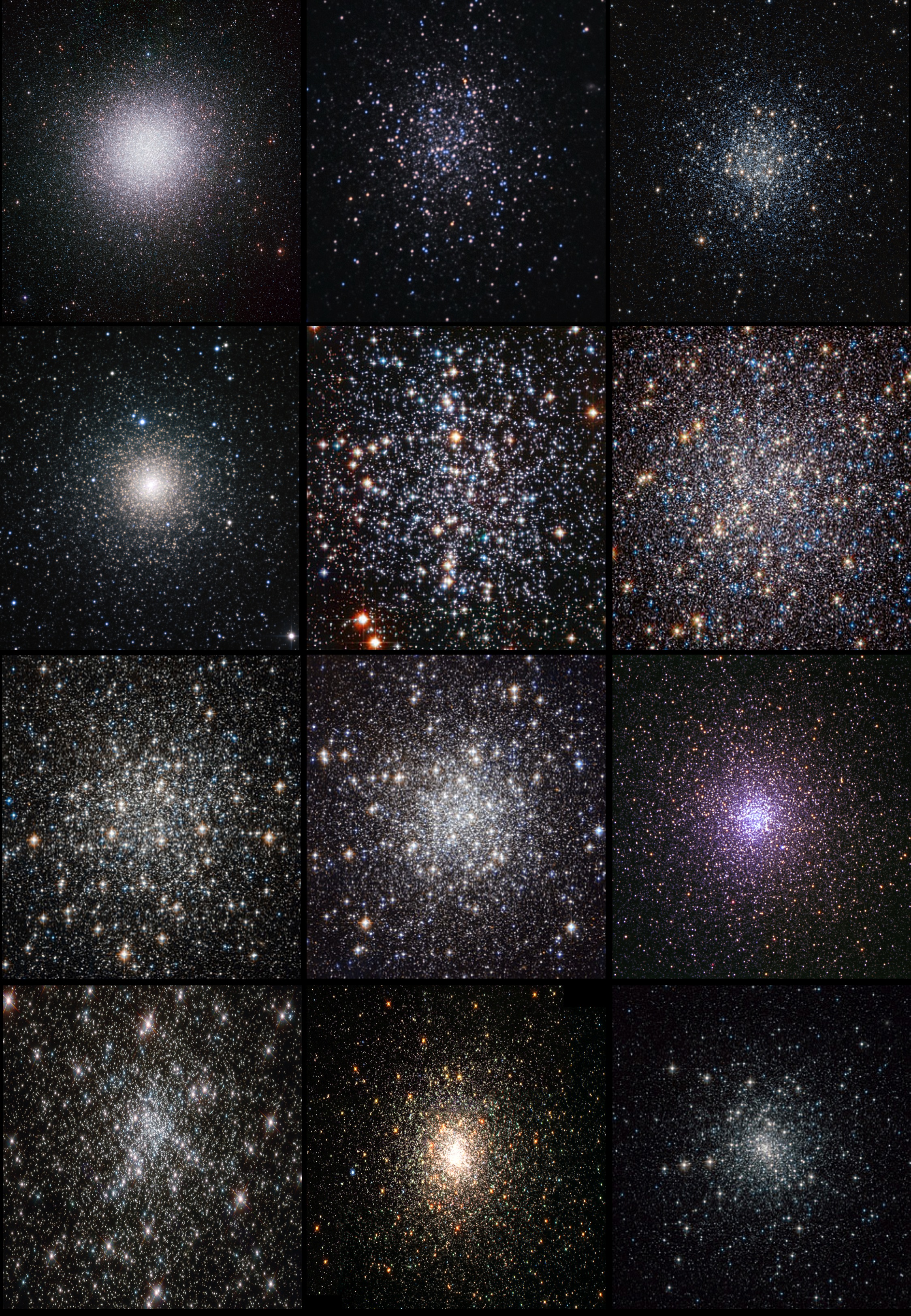On the Blues and the Lifestyles and Fates of the Hottest Stars as they Cluster in the Heavens: or, why aging gracefully depends on your lifestyle and environment...
The Stellar Dynamical Clock
- is a Nature paper that came out in the Christmas double issue, always my favourite and very good value, might I add.
This paper is from a long term collaboration lead by Prof. Francesco Ferraro which over many cycles has built up a systematic sample of Hubble Space Telescope images of Galactic Globular Clusters, focusing, in partiular, on the blue and UV emitters in the dense cores of clusters, but also incorporating a host of associated data and a fair amount of modeling etc.

Mosaic of Globulars (click to embiggen)
"Dynamical age differences among coeval star clusters as revealed by blue stragglers" by F. R. Ferraro, B. Lanzoni, E. Dalessandro, G. Beccari, M. Pasquato, P. Miocchi, R. T. Rood, S. Sigurdsson, A. Sills, E. Vesperini, M. Mapelli, R. Contreras, N. Sanna & A. Mucciarelli, Nature, 492, 393–395 (20 December 2012) [subscription] (arXiv-1212.5071).
A lot of interesting (IMNSHO) results have already come out of this collaboration, and the current is one of the more intriguing:
"Some people are in great physical shape at the age of 90, others appear old before they are 50. A new study demonstrates that this is true also for stellar clusters. In fact, despite their impressively large chronological ages of 12-13 billion years, stellar clusters can look more or less young. Astronomers have found a new clock able to measure the biological age of star clusters thus revealing their true "physical shape". "
The study tracks Blue Straggler Stars and how they have concentrated towards the centers of the clusters, and shown how this tracks directly the evolutionary state of the cluster as a whole through a "dynamical age", which can be measured directly from the surface density profile of the cluster, and which is not the same as the chronological age of the clusters.
From: Cosmic-Lab
